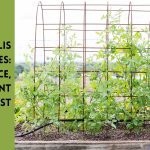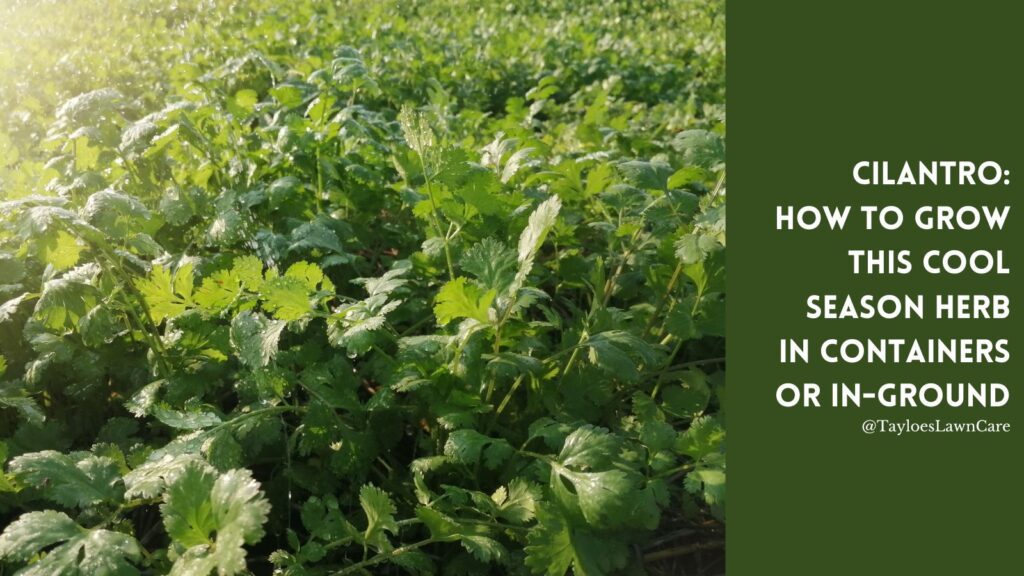Last Updated on: 30th October 2023, 01:34 pm
Learn about how to grow Melissa officinalis and why you should.
If you’re a fan of mint family herbs and want a touch of calming lemon scent in your garden, lemon balm (Melissa officinalis) might be the perfect addition. It’s both an attractive garden plant and a versatile herb with a storied history.
By the end of this content, you will read:
- How to plant Melissa officinalis
- Weighing whether to grow in pots or in the ground
- Pollinators it attracts
- Harvesting and drying
- How to make lemon balm powder
- Traditional medicine usage of this herb
- Recipe for lemon balm tea
Growing Requirements for Lemon Balm
Lemon balm thrives in USDA hardiness zones 3 through 7. Tayloe’s Lawn Care Services provides services to clients in zones 7b and 8a – we live in 8a and grow it without any issues. However, we give it some afternoon shade to prevent leaf scorching.
The plant isn’t overly fussy about soil but prefers well-draining soil with a pH between 6.0 and 7.5. It’s a vigorous plant that adapts to various soil types. Instead, rich, loamy soil will give the best results. It prefers full sun to partial shade.
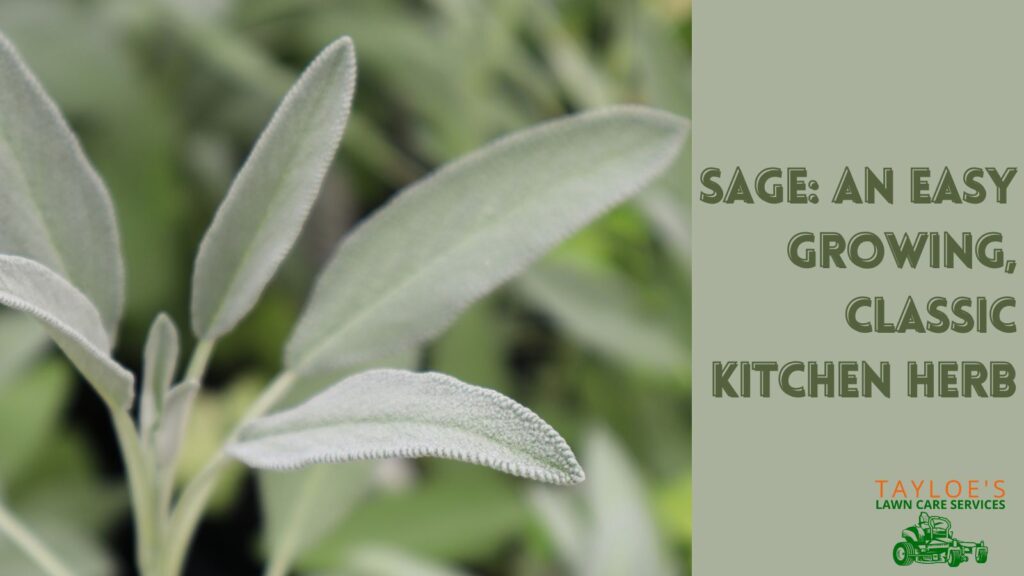
Planting Lemon Balm
You may grow lemon balm from seed, cuttings, or nursery-purchased seedlings:
- From Seed: Lemon balm seeds can be sown indoors 6-8 weeks before the last frost or directly outdoors in late spring. Cover the seeds lightly with soil, as they need light for germination, usually occurring in twelve to fourteen days.
- From Cuttings: Take a three to four-inch cutting from a mature plant in early summer. Strip off the lower leaves, dip the cut end in rooting hormone, and plant it in a pot with well-draining soil. Keep the soil moist until roots develop.
- From Seedlings: You can purchase lemon balm seedlings from a nursery and transplant them outdoors after the danger of frost has passed.
Lemon balm is typically planted in the spring but can also be sown in the fall in milder climates.
Choosing a Location for Growing Lemon Balm: Ground or Pots?
Choosing where to plant Melissa officinalis depends mainly on your gardening goals and space constraints. You can either plant it in the ground or in pots or containers. Both methods offer unique advantages.
Ground Planting:
When planted in the ground, the herb has more room to expand its root system. This freedom allows it to grow more robustly, leading to larger, healthier plants that are capable of producing more harvestable material. With its attractive, bushy growth and small white flowers in the summer, a well-grown lemon balm plant can become a feature in your garden.
However, gardeners must be aware that, like all mints, it is a vigorous spreader. Given the opportunity, it can quickly take over garden beds, crowding out other less aggressive plants. If you choose to plant it in the ground, consider doing so in an area where its spread can be easily managed. Another option is to use underground barriers or plant it in a bottomless container sunk into the ground to prevent the roots from spreading unchecked.
Container Planting:
On the other hand, growing Melissa officinalis in containers offers a different set of advantages. First of all, it gives you more control over the plant’s spread. Since lemon balm is a mint family plant and can be quite invasive, growing it in a container can prevent it from spreading to unwanted areas of your garden.
Container planting also offers portability. Pots can be moved indoors during harsh winters, which can be particularly beneficial if you live outside its preferred hardiness zones (USDA zones 3-7). This portability also means you can easily move the plant to different areas based on sunlight requirements or even bring it indoors to enjoy its aromatic qualities.
Finally, container planting can be ideal for those with limited garden space. You can grow lemon balm in a pot, whether you have a small backyard, patio, balcony, or even a sunny indoor space.
When choosing a pot for lemon balm, ensure it’s large enough to accommodate the plant’s mature size (it can grow up to two feet tall and wide) and has good drainage. The plant isn’t overly fussy about soil but prefers a well-draining soil mixture to prevent waterlogging.
Whether you grow Melissa officinalis in the ground or in a container depends on your specific gardening circumstances. It also depends on what you hope to achieve with your plant. Both methods can lead to thriving lemon balm plants if appropriately managed.
Pollinators and Companion Plants
Lemon balm attracts bees and butterflies, making it an excellent plant for supporting pollinators.
As for companion plants, consider planting this herb near crops that need help with pollination, like fruit trees and vegetables. It also pairs well with other herbs, such as basil and chamomile, but avoid planting it near other mint varieties to prevent cross-pollination.
Harvesting Lemon Balm
You can begin harvesting lemon balm once the plant is established and has plenty of leaves—typically about three months after planting. Cut stems about two-thirds down the plant, which encourages bushier growth. Harvesting can continue throughout the summer into early fall.
Drying Lemon Balm
You can use an electric dehydrator or an oven to dry lemon balm.
- Dehydrator: Spread the leaves on the trays of a dehydrator, set it to the herb setting (usually around 95°F or 35°C), and dry them until crisp.
- Oven: For oven drying, set your oven to its lowest setting (usually around 150°F or 65°C), spread the leaves on a baking sheet, and leave the door slightly ajar to allow moisture to escape. Check regularly to prevent burning, and remove the leaves once they’re crisp and crumble easily. The drying time varies but typically takes an hour or two.
Once dried, store the leaves in an airtight container in a cool, dark place.
Making Lemon Balm Powder
Learning how to make lemon balm powder is a great way to preserve this herb for long-term use. It is an easy process you can do at home. Here’s a step-by-step guide:
Materials Needed:
- Fresh lemon balm leaves
- Dehydrator or oven
- Grinder (a coffee grinder or high-powered blender will work)
- Airtight container for storage
Instructions:
- Harvest the Lemon Balm: Begin by harvesting fresh lemon balm leaves, ideally in the morning after the dew has dried but before the sun is at its peak.
- Prepare the Leaves: Rinse the leaves under cool water to remove any dirt or insects, then dry them with a towel.
- Dehydrate the Leaves: Follow the instructions for dehydrating herbs mentioned in the previous section. Dry until crumbly but not burnt.
- Grind the Leaves: Transfer them to your grinder once the leaves are completely dried. Grind until you achieve a fine powder.
- Storage: Transfer the lemon balm powder to an airtight container. Store it in a cool, dry place out of the direct sunlight to maintain the quality.
Now, your lemon balm powder is ready for use! You can add it to teas, smoothies, or use it in cooking or homemade skincare products. It’s a great way to extend the shelf-life of your lemon balm and have this calming herb at your fingertips all year round.
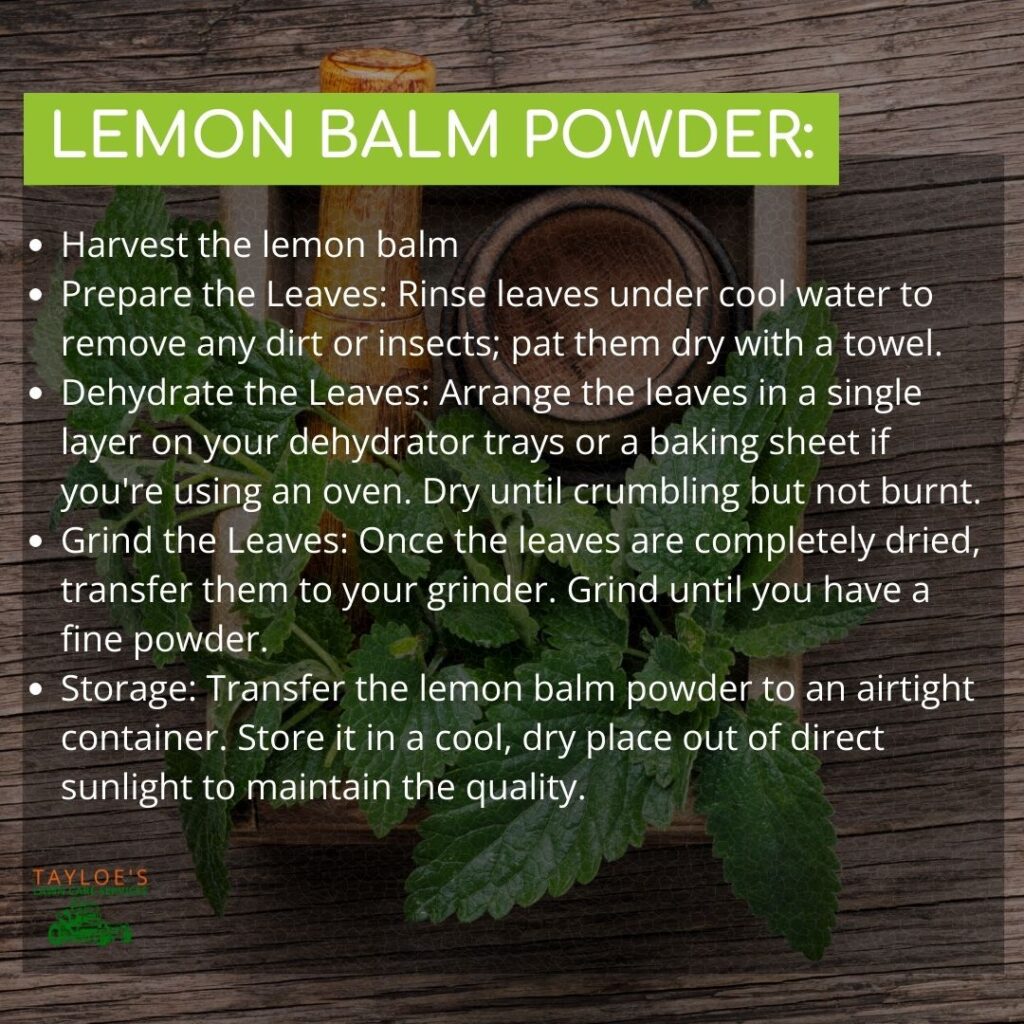
Historical Medicinal Uses
NOTE: We are lawn care providers, not doctors – this information is for an overview of the history of this plant. Check with your doctor or pharmacist before consuming this (or any) herb.
Lemon balm’s medicinal usage stretches back thousands of years, making it a plant with a deeply ingrained place in our collective herbal lore.
In ancient Greece, the philosopher, naturalist, and physician Dioscorides described lemon balm as being useful for “sweetening the spirit.” The Romans, who received much of their herbal wisdom from the Greeks, similarly employed it for its calming and mood-lifting properties.
It was widely used in traditional Roman medicine to alleviate indigestion symptoms and support the nervous system, primarily to promote sleep and reduce anxiety. Some records also suggest its use in alleviating menstrual discomfort, pointing towards its role in women’s health.
During the Middle Ages in Europe, lemon balm was a popular herb in monastic gardens, recognized for its healing properties. Monks and nuns cultivated it and made salves and ointments to treat wounds and insect bites, recognizing its potential antiviral and antibacterial properties.
The Swiss physician, botanist, and author of the celebrated work “A New Herbal” (1568), Pietro Andrea Mattioli, wrote of lemon balm’s effectiveness in treating conditions associated with the heart and melancholy, a term often referring to what we might today call depression.
In the early modern period, renowned herbalist John Gerard mentioned Melissa officinalis in his herbal catalogs, confirming its widespread use in Elizabethan England as a calming agent and digestive aid.
Lemon balm found its way to the New World with early colonists. They used it as a medicinal plant, culinary herb, and potpourri. Native Americans also adopted it for their healing practices, combining it with other herbs to treat various ailments.
Coming to contemporary times, many of these historical uses have been supported by modern scientific research. Studies suggest that Melissa officinalis may indeed have calming effects, potentially helping to alleviate anxiety and stress. It’s also being studied for its possible beneficial effects on cognitive function and gastrointestinal health.
Nevertheless, while we have come a long way in understanding the medicinal potential of this beautiful herbal treat, it continues to symbolize the enduring relationship between humans and the natural world for health and healing.
Making Lemon Balm Tea
NOTE: Before consuming Melissa officinalis, or any new herbal teas, check with your doctor or pharmacist.
Lemon balm tea is a delightful way to enjoy this herb. Here’s a simple recipe:
Ingredients:
- One to two teaspoons of dried lemon balm leaves (or two to four fresh leaves)
- One cup of boiling water
Instructions:
- Put the lemon balm leaves in a cup.
- Pour the boiling water over the leaves.
- Let it steep for about ten minutes.
- Strain the tea into a new cup, and discard the leaves.
- Optionally, sweeten the tea with honey.
Sip and enjoy the relaxing properties of your home-grown lemon balm.
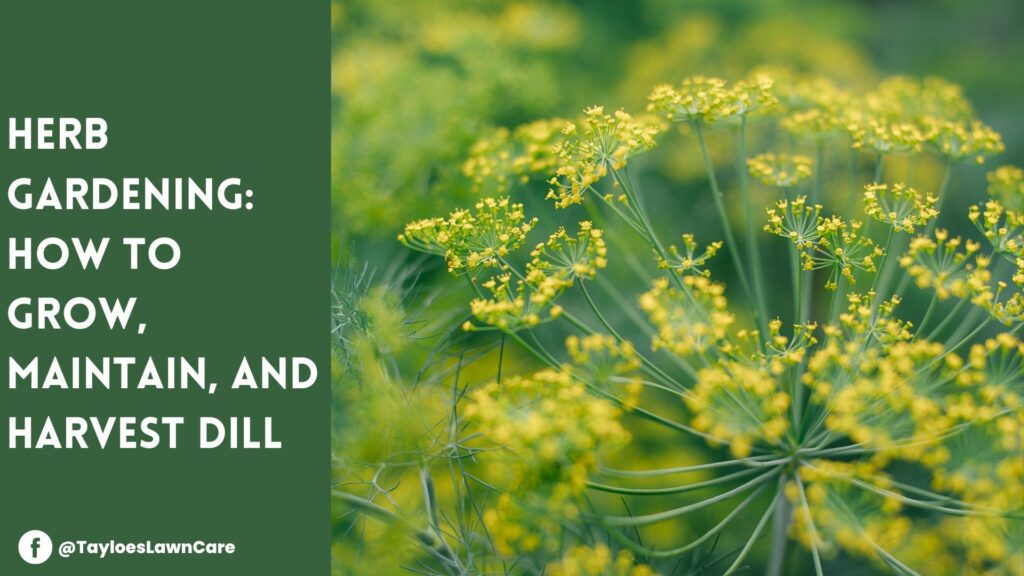
The Takeaway: Lemon Balm Is Attractive, Attracts Pollinators, and Makes a Fantastic Tea
Melissa officinalis is a rewarding addition to any garden for its delightful aroma and versatile uses. Cultivating this timeless herb is an opportunity to add a lovely touch to your garden and join the centuries-long tradition of herbal lore surrounding it.
Whether you plan to steep it in your afternoon tea, use it to attract pollinators, or simply enjoy its peaceful ambiance to your garden, your journey with herb gardening will be fulfilling.
We hope this guide has equipped you with everything you need to decide whether you want to include this mint family member in your herb garden. Remember, every garden, like every gardener, is unique. Embrace the process and take joy in your efforts.
Before you go, don’t forget to sign up for our newsletter below. As a subscriber, you’ll gain access to exclusive content, personalized gardening tips, and special promotions. Become part of our active online community by following us on Facebook. Live locally and need our help to put in an herb garden bed? Call or text us at 252.287.3376.
Author Profile

- Deborah Tayloe is the CEO and co-founder of Tayloe's Lawn Care Services, LLC. She has a B.S.Ed and holds certificates in soil and water management and herbology from accredited programs.
Latest entries
 Trees and ShrubsSeptember 14, 2025Fall Shrub Pruning Guide (September–October)
Trees and ShrubsSeptember 14, 2025Fall Shrub Pruning Guide (September–October) Trees and ShrubsApril 22, 2025Boxwood Blight: Early identification and isolation
Trees and ShrubsApril 22, 2025Boxwood Blight: Early identification and isolation Flower GardenApril 8, 2025John F. Kennedy Rose: Hybrid tea rose with elegant white blooms
Flower GardenApril 8, 2025John F. Kennedy Rose: Hybrid tea rose with elegant white blooms Vegetable GardenMarch 24, 2025Trellis vegetables provide an abundant vertical garden harvest
Vegetable GardenMarch 24, 2025Trellis vegetables provide an abundant vertical garden harvest




